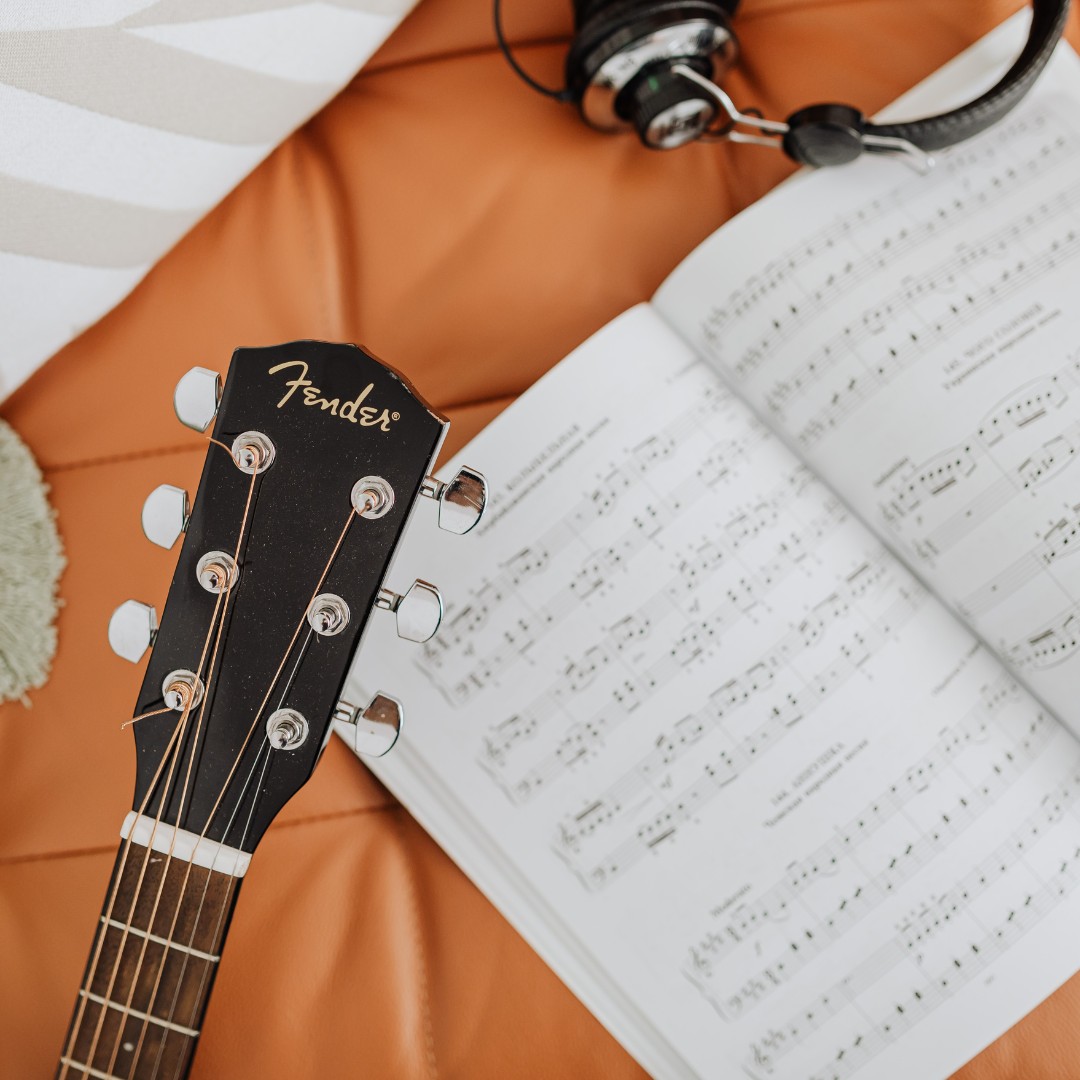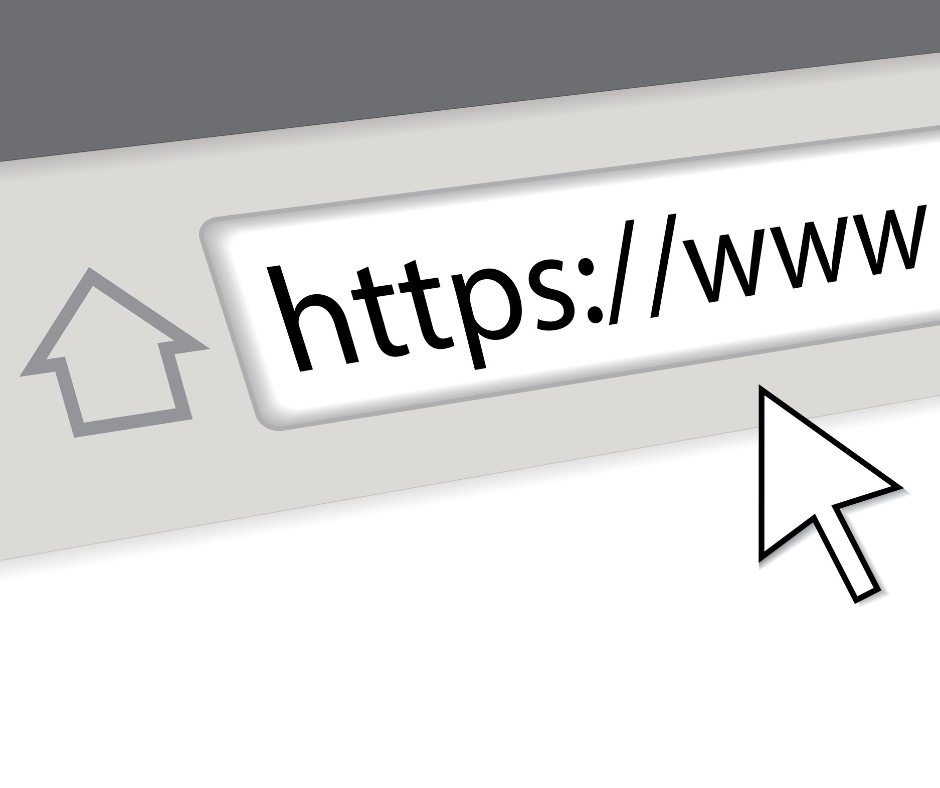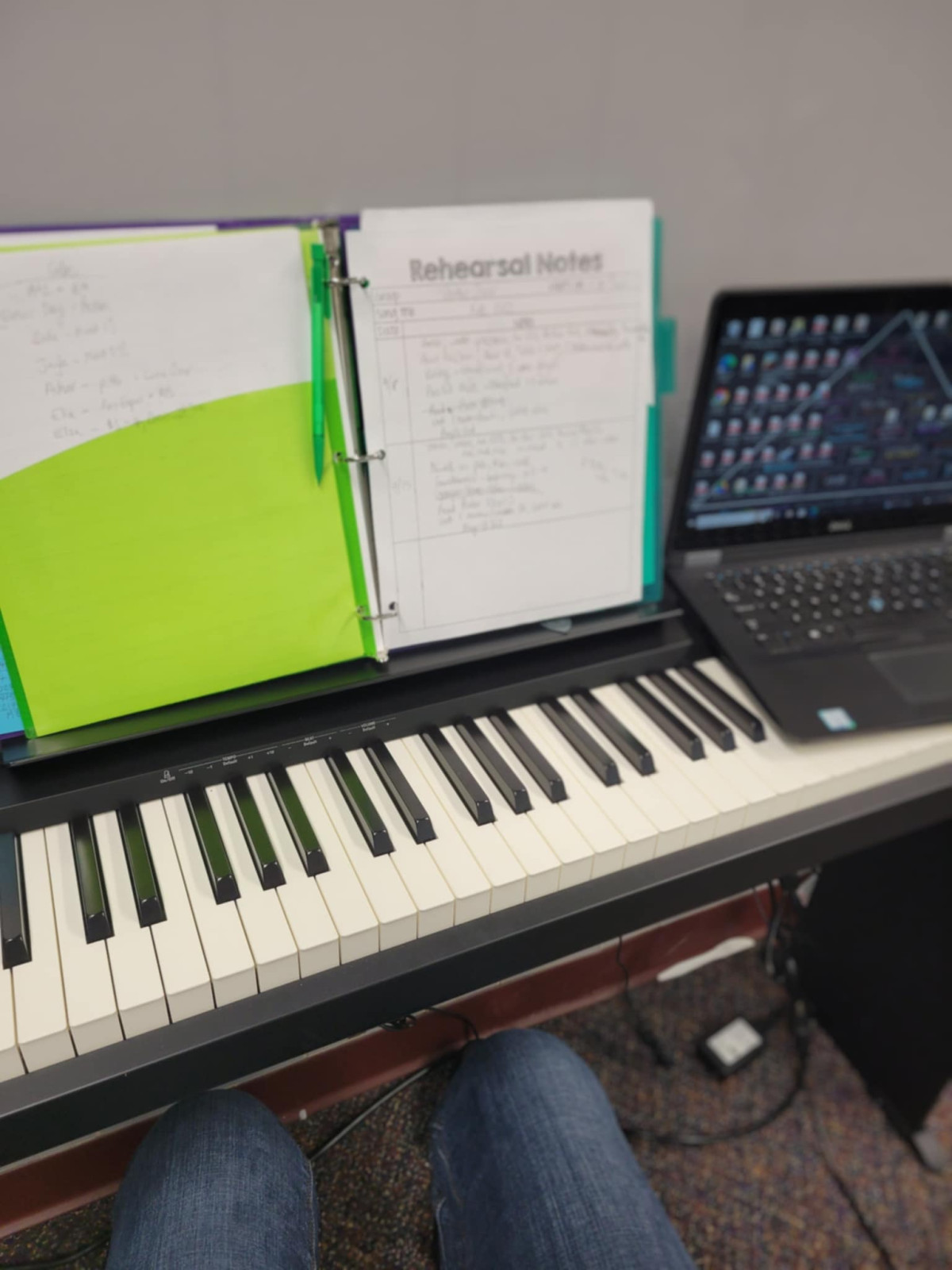
-they had a sick child
-their grandma passed away and suddenly they had to go to a funeral
-they deal with chronic pain and couldn't today
-they are struggling in marriage and something happened that morning
The problems are not all fixed. It's not suddenly easy being new here in IL.
But I am not alone, even if I feel lonely at times.
And that makes all the difference.

The Importance of Music in Early Development
User-Friendly and Accessible
Emphasis on Vocal and Instrumental Music
Focus on Repetition and Variation
Inclusive Recordings and Videos
Educational and Practical
Joyful Engagement with Music

Folate vs. Folic Acid: What’s the Difference?
- Folate: The natural form of vitamin B9 found in foods and high-quality supplements. It is more bioavailable and easily absorbed by the body.
- Folic Acid: The synthetic form often used in fortified foods and lower-quality supplements. Some individuals, particularly those with MTHFR gene variations, may have difficulty converting folic acid to its active form.
Iron-Free Prenatal Supplements: Are They Right for You?
- Adequate iron intake through diet
- Digestive discomfort from iron supplements
- Pre-existing high iron levels
No Added Sugar Prenatals: A Healthier Choice
Beef Liver Supplements: A Nutrient Powerhouse
- High in vitamin A, B vitamins, and iron
- Excellent source of choline, crucial for fetal brain development
- Contains folate in its natural form
Ningxia Red: A Nutrient-Rich Addition
- Rich in antioxidants
- Contains essential fatty acids
- May support immune function
- Supports energy without caffeine
Key Nutrients for Prenatal and Lactation Supplements
- Folate (as methylfolate)
- Vitamin D3
- Omega-3 fatty acids (DHA and EPA)
- Choline
- Iodine
- Vitamin B12
- Vitamin A (as beta-carotene)
- Zinc
- Selenium
Postnatal Lactation Supplements: Supporting Your New Role
- Higher levels of vitamin D3 (160 mcg or 6400 IU) to eliminate the need for infant vitamin D drops
- Increased choline and iodine to support breast milk production
- Continued DHA supplementation for infant brain development

1. Habits of the Household: Practicing the Story of God in Everyday Family Rhythms
- Strategies for creating faith-centered routines around mealtimes, bedtimes, and other daily activities
- Insights on how simple habits can shape both parents' and children's hearts
- Tools to create a home environment that reflects God's love amidst the chaos of family life
2. Every Moment Holy: New Liturgies for Daily Life
- Prayers and liturgies for everyday events, from morning coffee to bedtime rituals
- Ways to infuse sacred meaning into ordinary moments
- Tools to help children recognize God's presence throughout their day
3. Treasuring God in Our Traditions: Celebrating Everyday Moments and Special Occasions
- Ideas for creating meaningful customs for both daily life and special occasions
- Guidance on building a legacy of faith that can be passed down through generations
- Strategies for making God the focal point of family celebrations
4. Cloud of Witnesses: A Treasury of Christian Prayers Through the Ages
- A diverse range of prayers from various Christian traditions
- Options for different occasions and seasons
- A connection to the broader Christian community throughout history
5. One Year Praying Through the Bible for Your Kids: A Daily Devotional
- Daily Bible readings and corresponding prayers
- A comprehensive journey through the entire Bible in one year
- Focused intercession for children's spiritual growth and character development
6. Morning Benedictions Collection: Free Daily Blessings
- A variety of benedictions that can be used during family morning gatherings
- Encouragement to set a positive tone for the day ahead
- A simple way to incorporate prayer and reflection into your morning routine
Implementing These Resources in Your Family Life
- Start small: Choose one resource and gradually incorporate it into your family routine.
- Be consistent: Regular practice, even if imperfect, is key to forming lasting habits.
- Involve everyone: Encourage all family members to participate and contribute ideas.
- Adapt as needed: Tailor the suggestions to fit your family's unique needs and personalities.
- Be patient: Building meaningful family worship habits takes time and persistence.

1. Active Listening: Understanding Music's Components
- Exploring diverse musical genres and discussing what your child hears.
- Identifying different instruments within a piece while listening -- from solo to multi-instrument ensemble.
- Analyzing how music conveys mood and emotion.
2. Rhythm Recognition and Reproduction: Internalizing & Applying Steady Beat
- Clapping or tapping out patterns for your child to repeat.
- Creating rhythms with everyday objects.
- Introducing basic notation concepts using music symbols (not necessary to start lessons but can be fun!)
3. Pitch Matching: Developing Melodic Awareness
- Playing simple melodies on a piano or xylophone for your child to sing back. Using your own voice is even better! IMPORTANT: make sure you don't go too low for young children though.
- Using hand signals to represent pitch changes while singing.
- Engaging in call-and-response and echo singing games & songs.
4. Fine Motor Skills: Preparing for Instrumental Techniques
- Finger exercises and games.
- Arts and crafts activities involving small object manipulation.
- Puzzles and building blocks to improve hand-eye coordination.
5. Patience and Persistence: Cultivating a Growth Mindset
- Engaging in activities that require focus and repetition.
- Acknowledging progress and effort, not just results.
- Demonstrating persistence by learning something new alongside your child.
Preparing for Musical Education

- "The Womanly Art of Breastfeeding" by La Leche League International: Often considered the "bible" of breastfeeding resources, this comprehensive guide covers everything from preparing for breastfeeding during pregnancy to weaning.
- "Ina May's Guide to Breastfeeding" by Ina May Gaskin: Written by a renowned midwife, this book combines medical facts with real-life stories, offering practical advice on achieving a good latch, overcoming common difficulties, and understanding the emotional aspects of breastfeeding.
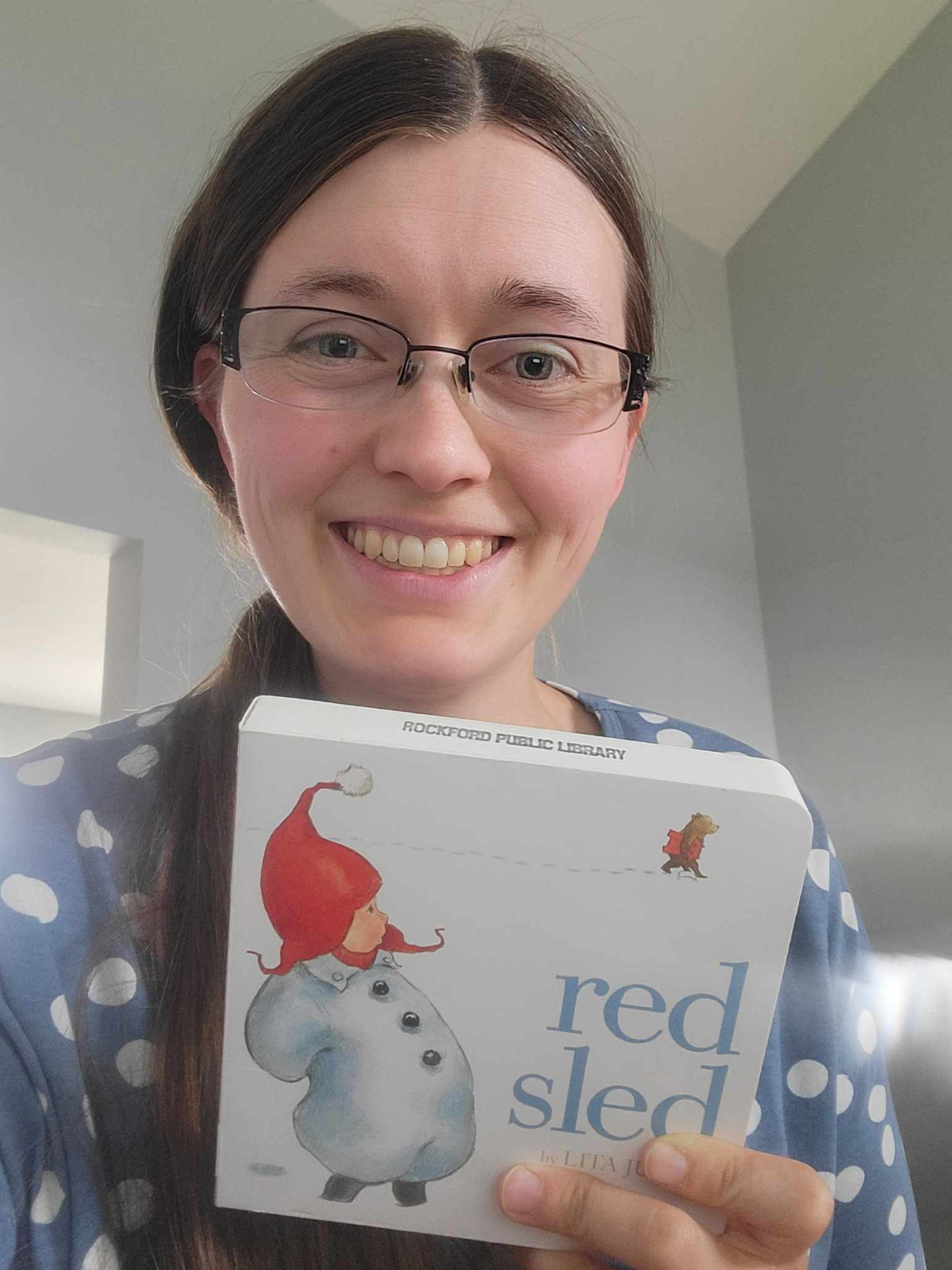
1. "Red Sled" by Lita Judge
2. "Through the Town: A Follow-the-Trail Book"
3. "Around the World: Follow-the-Trail Book"
4. "Say Zoop!" by Hervé Tullet
5. "Blue Hat, Green Hat" by Sandra Boynton
6. "The Squiggle" by Carole Lexa Schaefer
7. "Up, Up, Down" by Robert Munsch

Why Study Hymns?
- Gain historical insights
- Deepen your theological understanding
- Enhance your worship experience
- Connect with generations of believers
How to Study Hymns: A Step-by-Step Approach
1. Choose Your Hymn
2. Explore the Historical Context
- What was happening in the world at that time?
- What was the author's personal story?
3. Analyze the Lyrics
- Biblical references
- Poetic devices
- Recurring themes
4. Examine the Music
- How does the tune complement the lyrics?
- Are there any unique musical features?
5. Reflect and Apply
6. Sing and Share
Tools for Hymn Study
- Hymnals with historical notes (this one is my all-time favorite for connecting Scripture and the Gospel to worship for use with kids!)
- Online hymn databases
- Commentaries on hymns (I've linked some books below that may be a helpful place to start!)
- Recordings of different performances
The Benefits of Regular Hymn Study
- Enrich your spiritual life
- Broaden your musical appreciation
- Connect you with Christian heritage
- Provide comfort and inspiration in difficult times

What is a Morning Benediction?
Benefits of Morning Benedictions
1. Fostering Gratitude
2. Strengthening Family Bonds
3. Centering Your Mind and Heart
4. Setting Intentions
5. Reducing Stress and Anxiety
6. Enhancing Spiritual Well-being
7. Creating a Positive Routine
Implementing Morning Benedictions
Printable Morning Benedictions Collection
What's Included:
- 20 unique morning benedictions
- Beautifully designed graphics
- A mix of traditional and contemporary blessings
- Benedictions suitable for various occasions and moods
How to Use:
- Download and print the collection
- Print & cut out individual benedictions or keep digital as-is
- Place them in a decorative box or folder in a prominent place
- Each morning, select a benediction to read together as a family
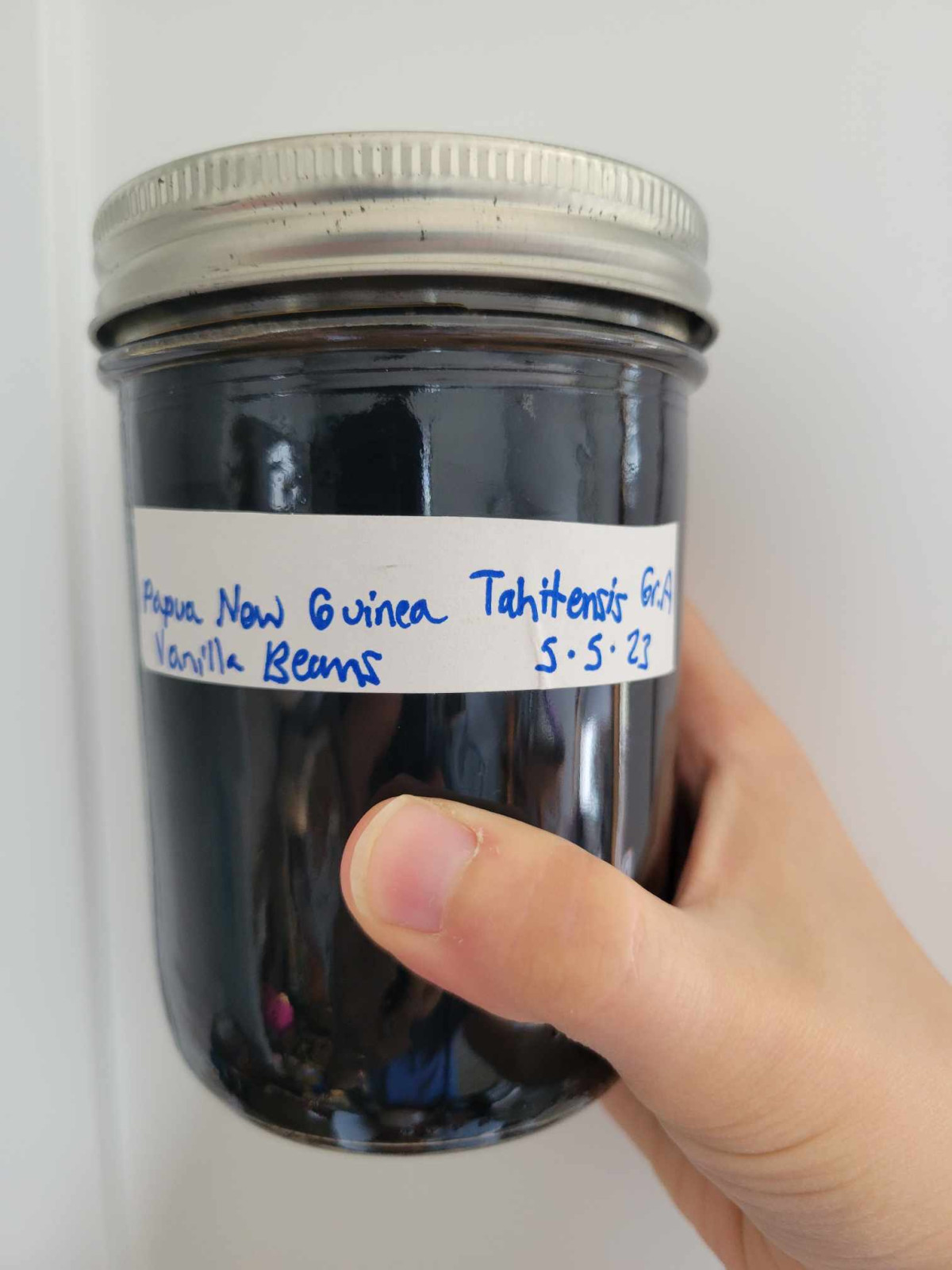
What is Vanilla Sugar?
Ingredients and Tools
- Used vanilla beans from extract-making, a few beans per cup of sugar
- Granulated sugar (1 cup per vanilla bean)
- Airtight container or jar
- Coffee grinder or spice grinder
Step-by-Step Instructions
- Thoroughly rinse the used vanilla beans to remove any residual alcohol from the extract-making process.
- Pat the beans dry with a clean towel, then air-dry them for 1-2 days. For faster results, place them in a low-temperature oven (around 170°F/75°C) for a few hours.
- Once completely dry and brittle, break the vanilla beans into smaller pieces to fit in your grinder.
- Using a coffee or spice grinder, grind the dried vanilla bean pieces into a fine powder. This step is crucial for evenly distributing the vanilla flavor throughout the sugar.
- In an airtight container, mix 1 cup of granulated sugar with the vanilla bean powder. Stir well to ensure even distribution.
- Seal the container tightly and give it a good shake to further mix the vanilla powder with the sugar.
- Let the mixture sit for at least a week to allow the flavors to meld and intensify.
Pro Tips for Perfect Vanilla Sugar
- Ensure the vanilla beans are completely dry before grinding to prevent clumping in the sugar. This is an important step!
- Clean your grinder thoroughly after use to prevent flavor transfer to other spices.
- The vanilla flavor will intensify over time, so taste and adjust as needed.
- For a more intense vanilla flavor, use more ground vanilla bean or less sugar.
Creative Uses for Homemade Vanilla Sugar
- Enhance your morning coffee or tea by stirring in a spoonful of vanilla sugar.
- Elevate baked goods and desserts by substituting regular sugar with vanilla sugar in recipes.
- Create gourmet cocktail rims by dipping glass edges in vanilla sugar.
- Sprinkle over fresh fruit, oatmeal, or yogurt for a delightful breakfast treat.
- Use in savory dishes, such as tomato sauces or meat rubs, for added depth of flavor.
- Make vanilla-infused whipped cream by using vanilla sugar instead of regular sugar.
- Create a luxurious body scrub by mixing vanilla sugar with coconut oil.
Why Make Your Own Vanilla Sugar?
- Cost-effective: Get more value from expensive vanilla beans by using them twice.
- Eco-friendly: Reduce waste by upcycling used beans that might otherwise be discarded.
- Customizable: Control the intensity of vanilla flavor to suit your taste preferences. You can also experiment with different types of vanilla beans!
- Versatile: Use in both sweet and savory recipes for a unique flavor profile.
- Gourmet touch: Elevate everyday recipes with a homemade, artisanal ingredient.
- Gift-worthy: Package your homemade vanilla sugar in decorative jars for a thoughtful, handmade gift.
Storage and Shelf Life
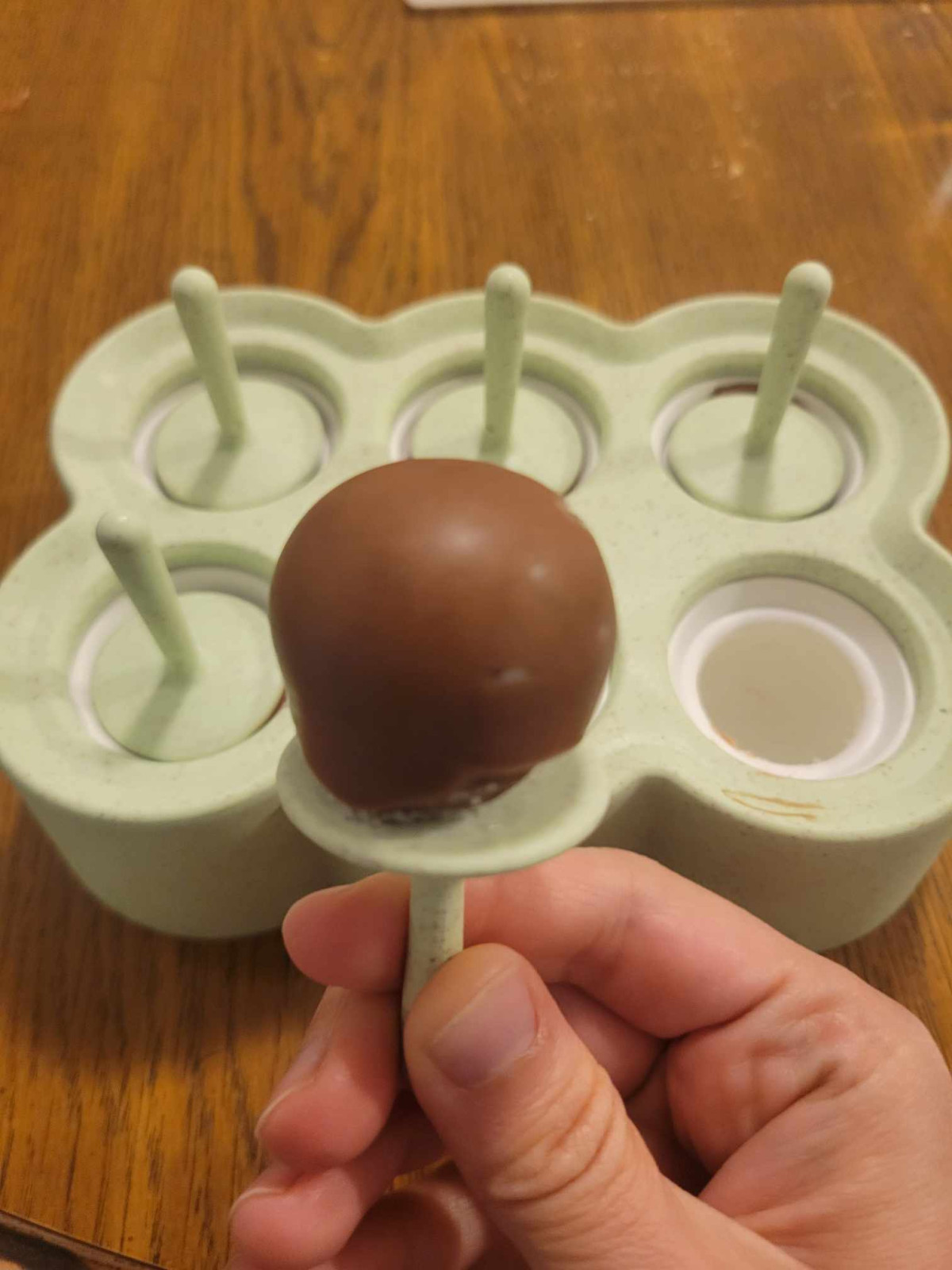
Why Avocado?
The Recipe
Ingredients:
- 2 ripe avocados
- 1/3 cup unsweetened cocoa powder
- 1/2 cup honey or maple syrup (adjust to taste)
- 1 cup greek yogurt (or yogurt of choice) -- learn how to make yogurt!
- 2 tsp vanilla extract -- learn how to make vanilla extract!
- 1/4 tsp salt
- Optional: 1/4 cup dark chocolate chips for extra indulgence
Instructions:
- Cut the avocados in half, remove the pits, and scoop the flesh into a blender.
- Add the cocoa powder, honey or maple syrup, almond milk, vanilla extract, and salt to the blender.
- Blend all ingredients until smooth and creamy, scraping down the sides as needed. The mixture should be completely free of avocado chunks.
- Taste the mixture and adjust sweetness if desired. Remember, frozen treats tend to taste less sweet when frozen, so you may want to make it slightly sweeter than you think necessary.
- If using, stir in the dark chocolate chips by hand.
- Pour the mixture into popsicle molds, leaving a little space at the top for expansion.
- Insert popsicle sticks and freeze for at least 4 hours, or until completely solid.
- To remove, run the molds briefly under warm water and gently pull out the pops.
Tips for Success
- Choose ripe avocados for the creamiest texture. They should yield to gentle pressure but not be overly soft.
- If you don't have popsicle molds, you can use small paper cups. Cover the tops with aluminum foil and poke the popsicle sticks through the center.
- For a fun twist, try adding a pinch of cinnamon or a dash of peppermint extract to the mixture before freezing.
- These fudge pops will keep in the freezer for up to two weeks if stored in an airtight container or bag.
Nutritional Benefits
Bonus: Instant Chocolate Pudding
How to Enjoy as Pudding:
- After blending all the ingredients as per the fudge pop recipe, taste the mixture. If you prefer it a bit sweeter for pudding, feel free to add a touch more honey or maple syrup.
- Instead of pouring the mixture into popsicle molds, transfer it to individual serving bowls or a large container.
- Cover and refrigerate for at least 2 hours to allow the flavors to meld and the pudding to chill.
- When ready to serve, give it a quick stir. The pudding should be thick and creamy.
- For an extra special touch, top with a dollop of whipped coconut cream, a sprinkle of cacao nibs, or a few fresh berries.
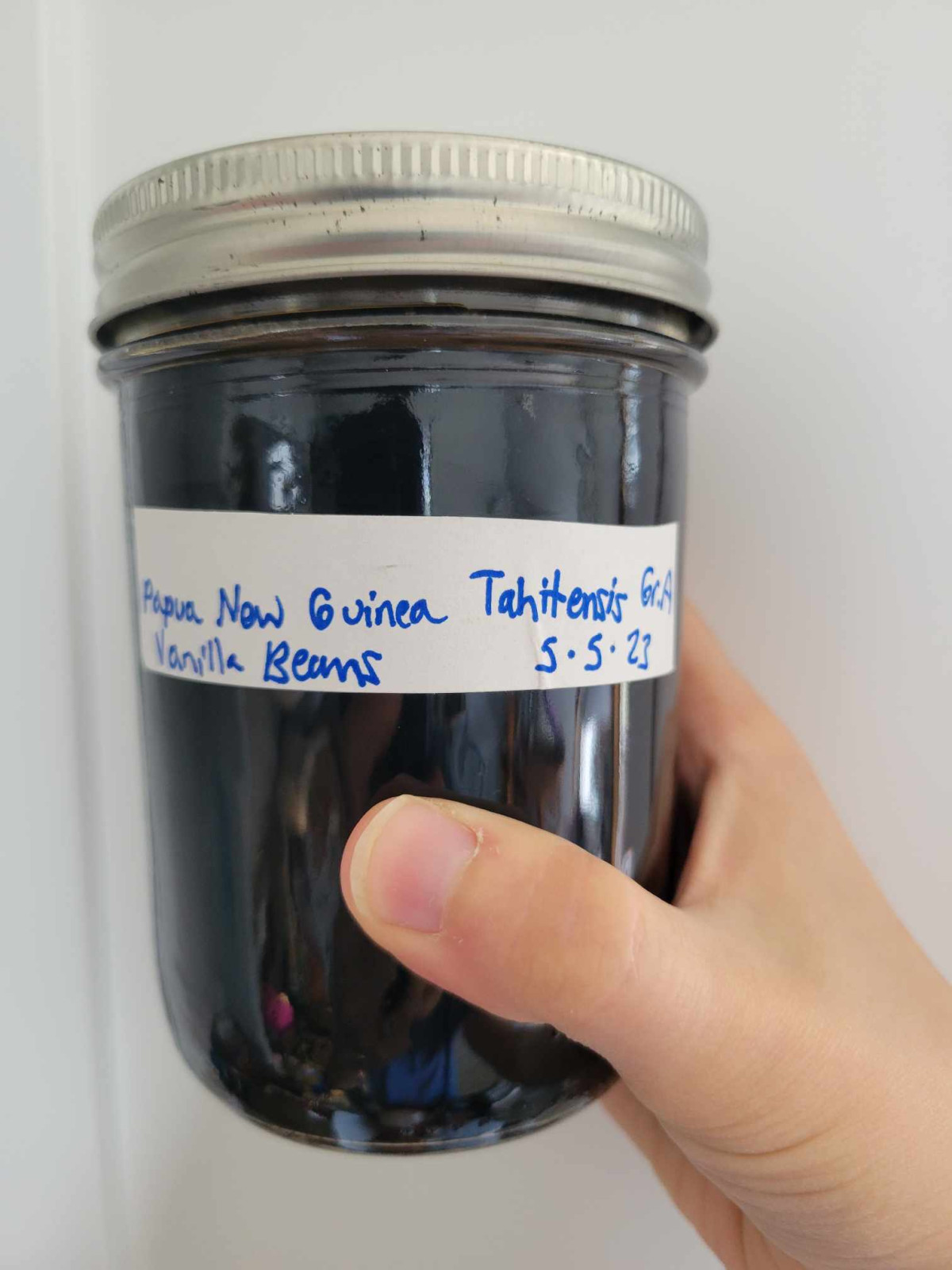
Ingredients and Equipment
- 1 oz vanilla beans
- 1 cup (8 oz) of vodka or other 70+ proof alcohol
- A clean glass jar with a tight-fitting lid
- A sharp knife
Step-by-Step Instructions
- Begin by splitting the vanilla beans lengthwise using a sharp knife. This exposes the tiny seeds inside, which are packed with flavor.
- Cut the split beans into smaller pieces, approximately 1/2 inch long. This increases the surface area, allowing for better flavor extraction.
- Place the cut vanilla beans and any loose seeds into your clean glass jar.
- Pour the vodka or other alcohol over the beans, ensuring they are completely submerged. The alcohol acts as a solvent, extracting the vanilla flavor compounds.
- Seal the jar tightly with its lid and give it a vigorous shake to start the infusion process.
- Store the jar in a cool, dark place at room temperature. A pantry or kitchen cupboard away from heat sources is ideal.
- For the first week or two, shake the jar daily. After that, reduce the frequency to once or twice a week.
- Allow the extract to steep for a minimum of 6 months. Before using, make sure it smells like vanilla when opening, not alcohol. For the best flavor, patience is key – waiting 12-18 months will result in a richer, more complex vanilla extract. I try to wait 18-24 months! Or increase the amount of beans per 8oz of alcohol in order to speed up the extraction process a bit.
Tips for Success
- Choose high-quality vanilla beans for the best flavor. Madagascar, Tahitian, and Mexican vanilla beans are popular choices, each offering slightly different flavor profiles. I have used these or (ideally) ordered from a co-op like this in the past and REALLY liked them, but they are not always immediately available.
- The type of alcohol you use can affect the final taste. Vodka is a popular choice (and what I have always used) due to its neutral flavor, but you can experiment with rum or bourbon for different flavor notes.
- As you use your extract, you can continue to top it off with more alcohol. This "perpetual" method allows you to maintain your vanilla extract indefinitely. I don't choose to do it this way, I personally make new batches every so often so I am more clear on how long it's gone and when it's ready. Plus then I can experiment with different types of beans for flavor.
- When the flavor begins to weaken, simply add fresh vanilla beans to the jar to reinvigorate the extract. I have just taken my old beans and made vanilla sugar or thrown them in a jar with a small amount of alcohol to collect all the old beans and eventually use that down the road too. Nothing goes to waste!
Benefits of Homemade Vanilla Extract
- Cost-effectiveness: While the initial investment in vanilla beans may seem high, homemade extract is more economical in the long run, especially for frequent bakers.
- Quality control: You can ensure the purity of your extract by using high-quality ingredients and avoiding artificial additives.
- Customization: Experiment with different types of vanilla beans or alcohols to create unique flavor profiles.
- Gift-giving potential: Homemade vanilla extract makes an excellent gift for food enthusiasts and home bakers. I gave vanilla extract for Christmas two years ago and everyone loved it!




